Abstract
The comparative effect of indomethacin and hydrocortisone on the resistance of mice or rats to various acute, subacute, and latent bacterial infections was investigated. Large daily doses of indomethacin and hydrocortisone administered to mice challenged with bacterial pathogens, including Klebsiella pneumoniae AD, Salmonella schottmuelleri 3010, Staphylococcus aureus (Smith), Streptococcus pyogenes C203, Salmonella pullorum #2, Proteus vulgaris 1810, and Pseudomonas aeruginosa 2616, revealed that in essentially all of these acute infections, the mortality of the infected mice treated with indomethacin was essentially identical to that found in the infected controls. In contrast, hydrocortisone often lowered the resistance of mice to these acute infections. In a more chronic bacterial infection due to Corynebacterium kutscheri, hydrocortisone produced striking deleterious effects on resistance, whereas indomethacin administration in doses approaching the maximal tolerated level caused no observable adverse effects on host resistance. Indomethacin fed continuously to rats for 80 days, at maximal tolerated levels, caused no observable adverse effects on the host-parasite relationship of rats which were shown to harbor various latent infections. Hydrocortisone administration, however, lowered the resistance of rats as evidenced by increased mortality related directly to extensive bacterial infection. Insofar as infection is concerned, indomethacin behaved like other nonsteroid anti-inflammatory agents such as aspirin and phenylbutazone.
Full text
PDF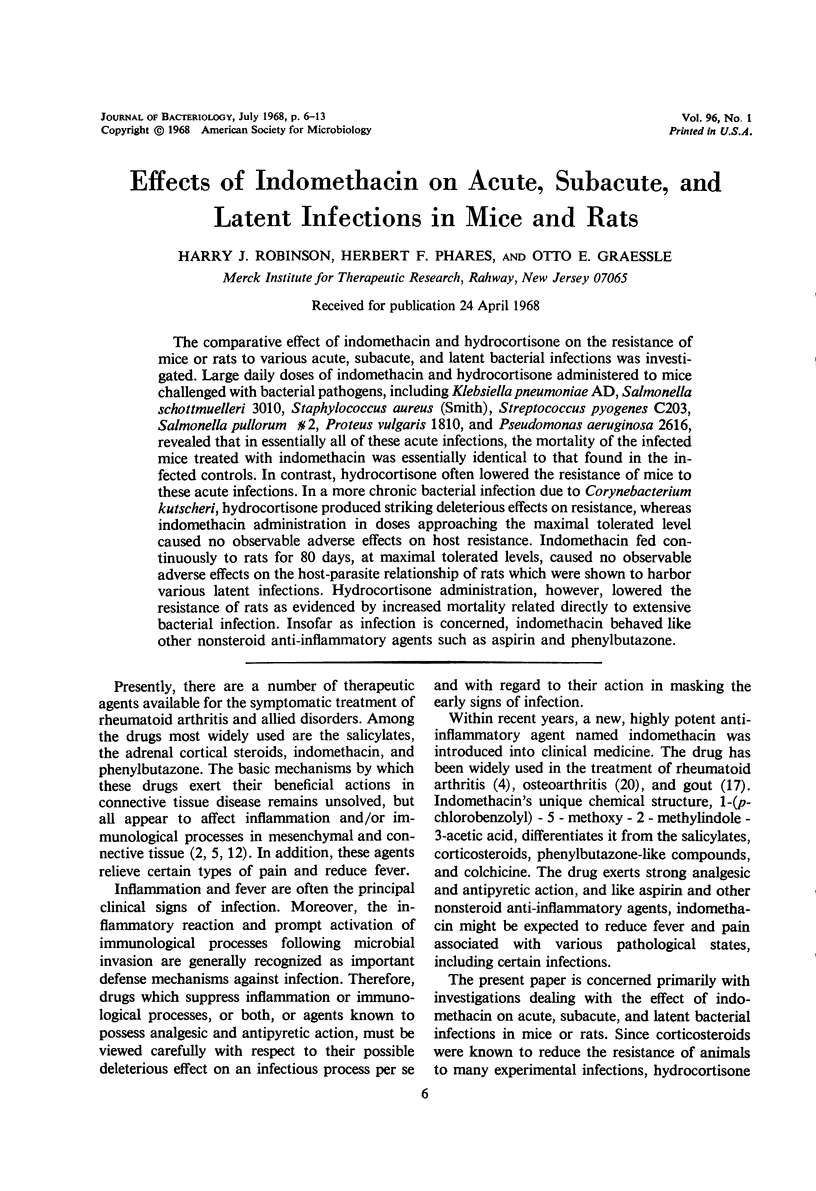
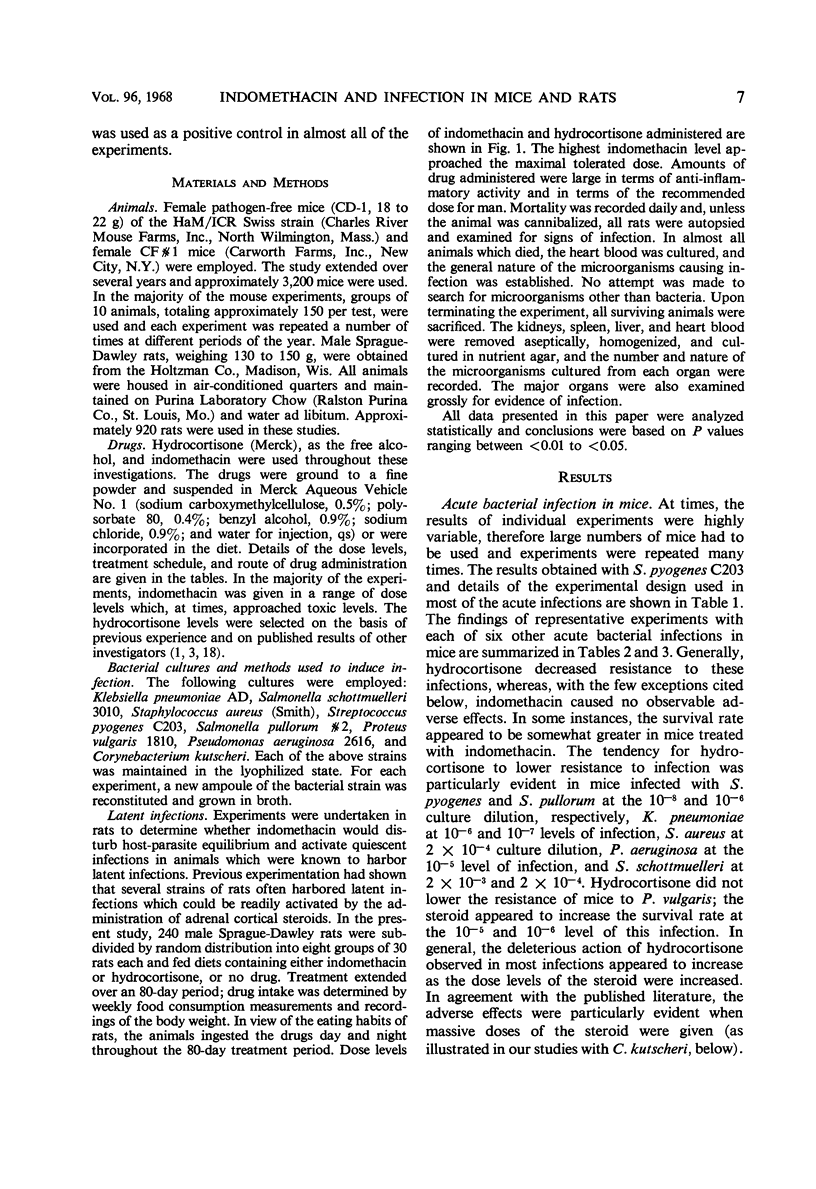
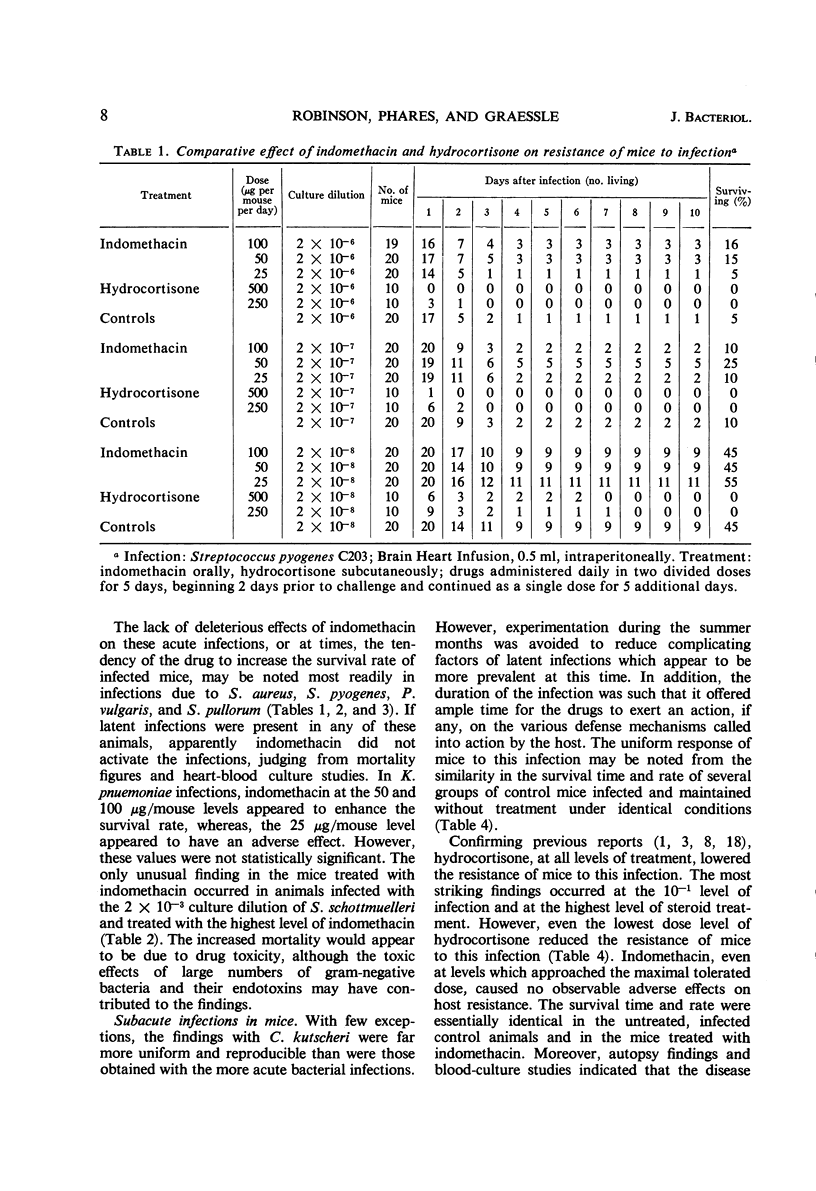
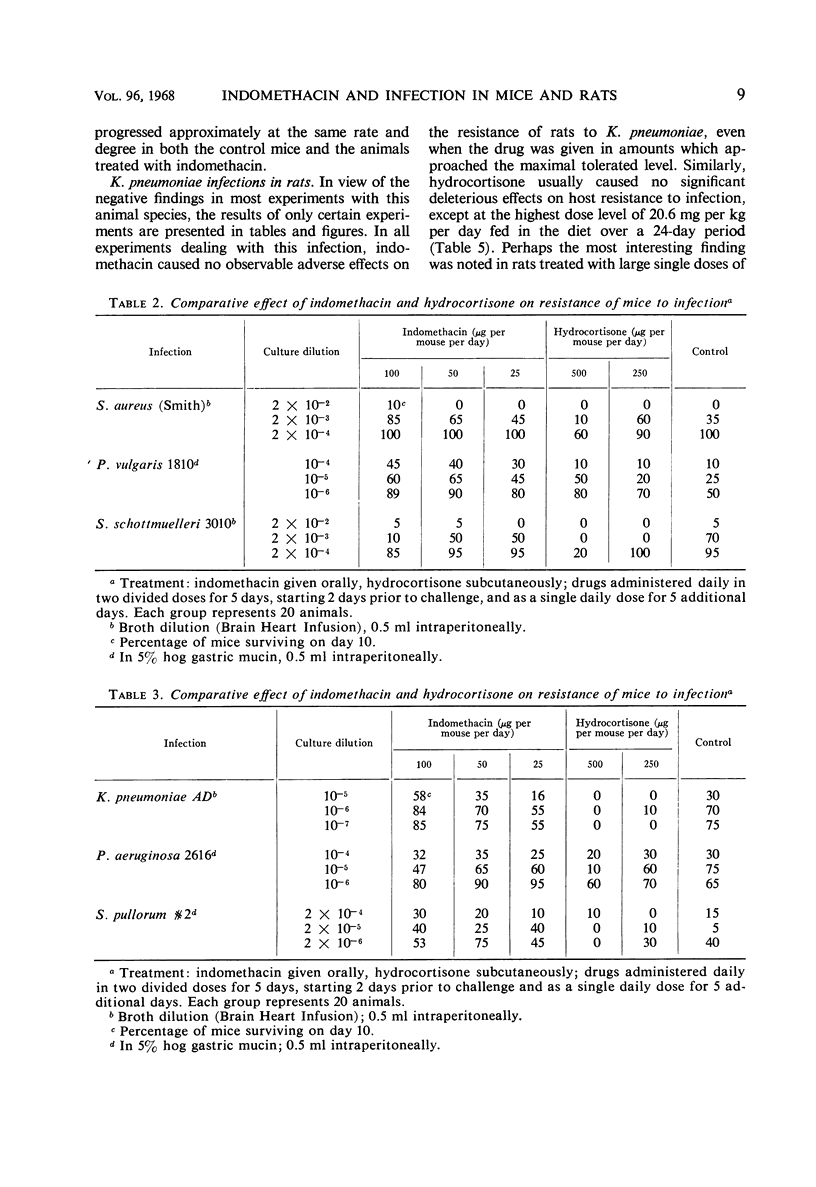
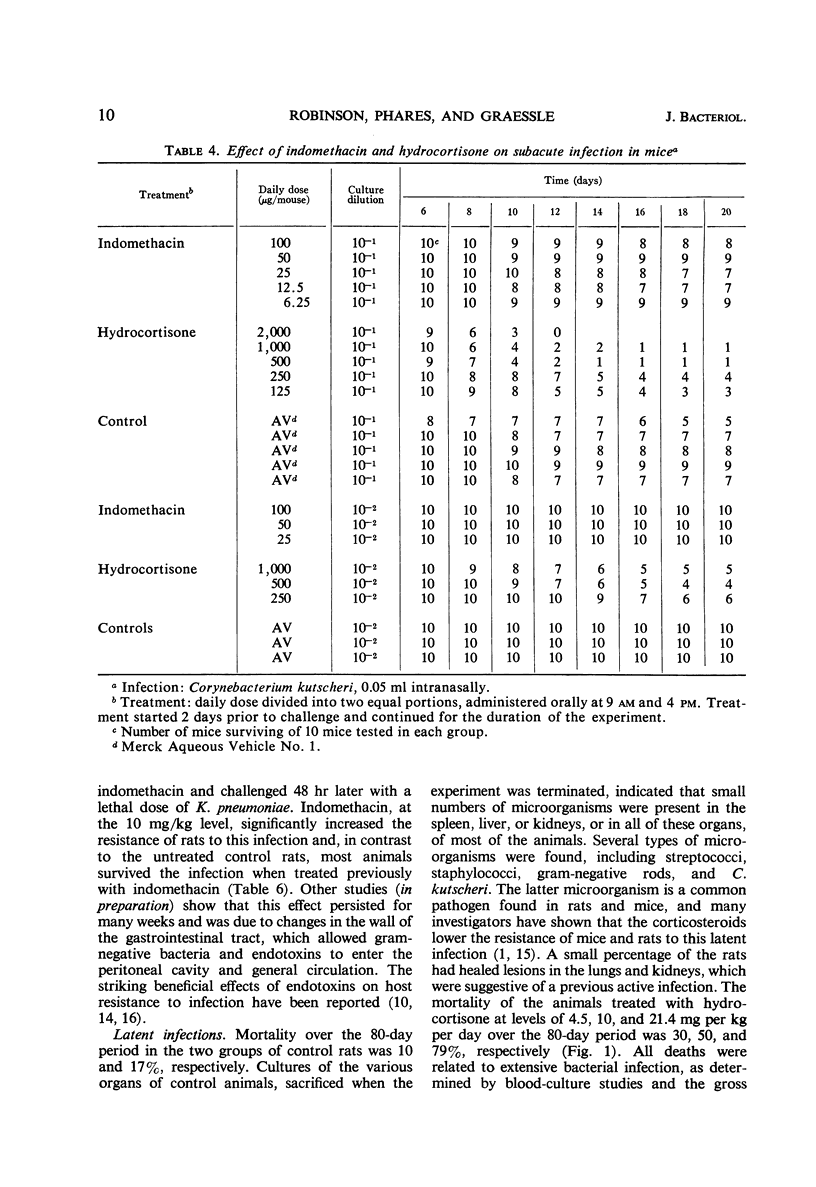
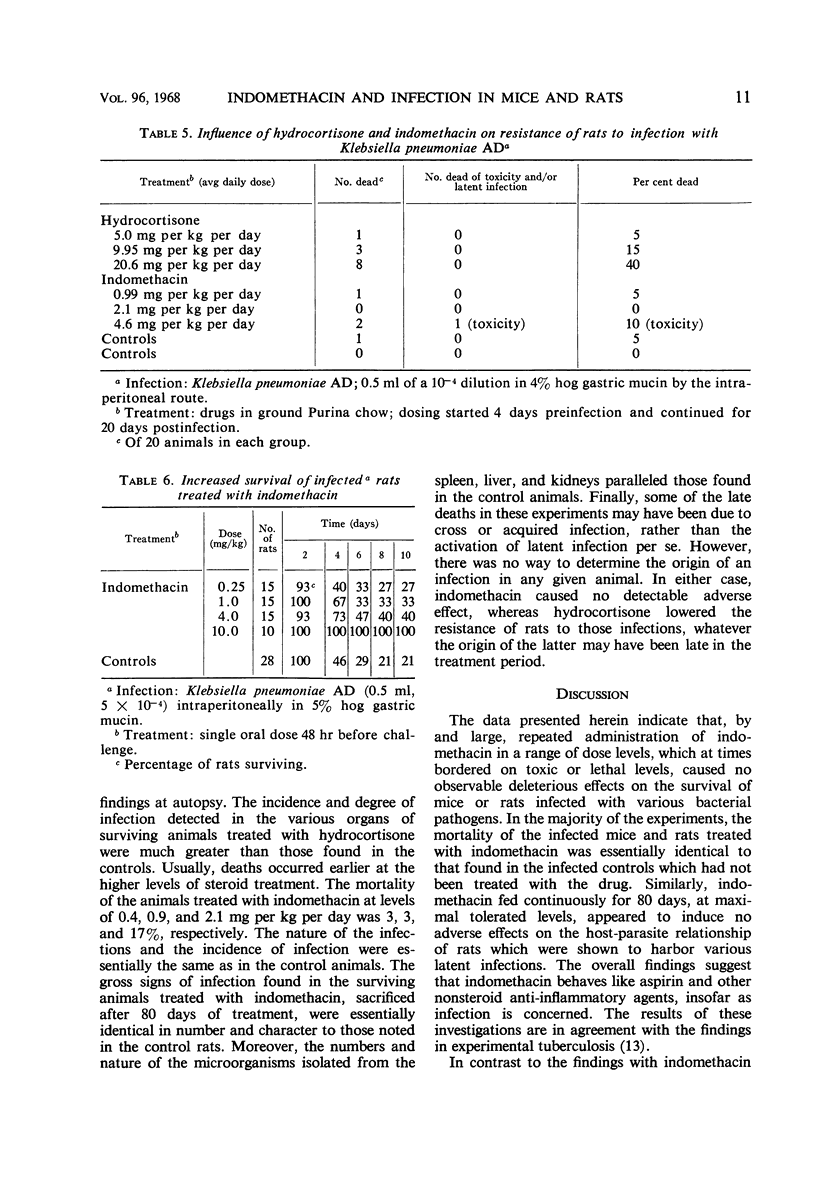
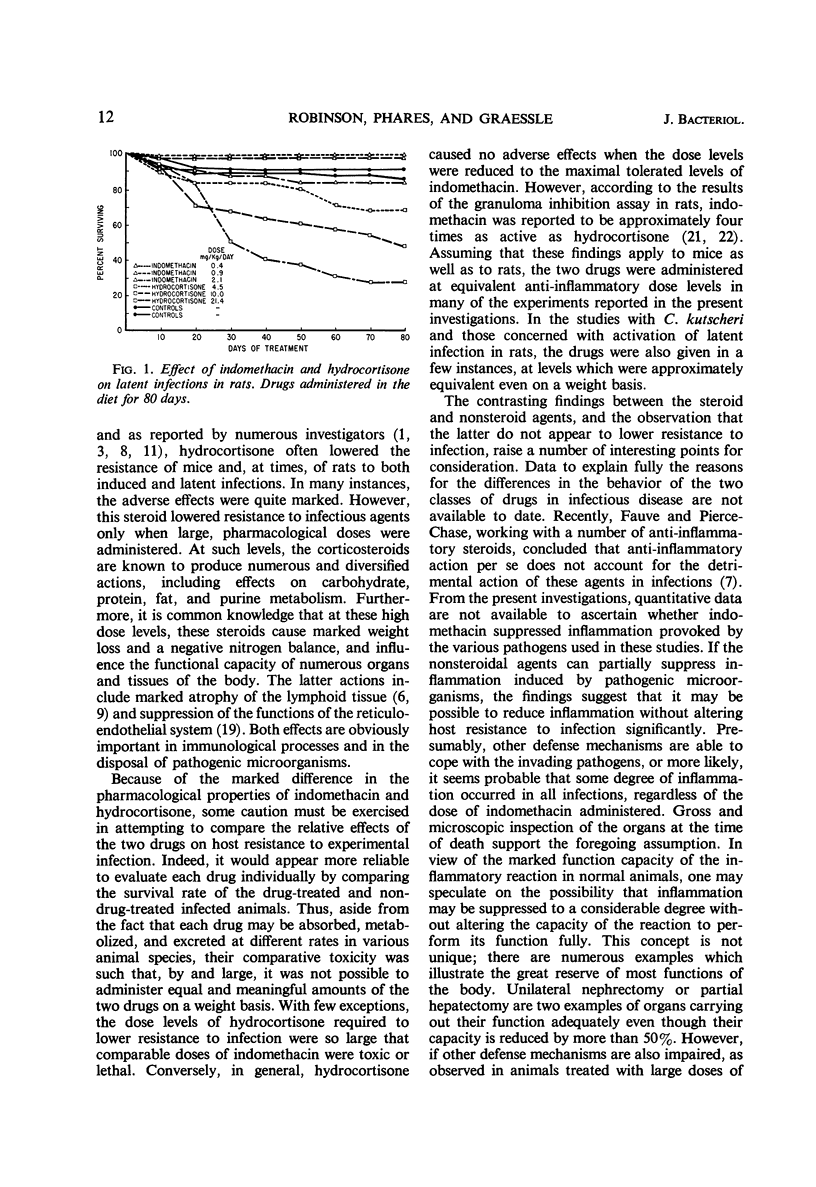
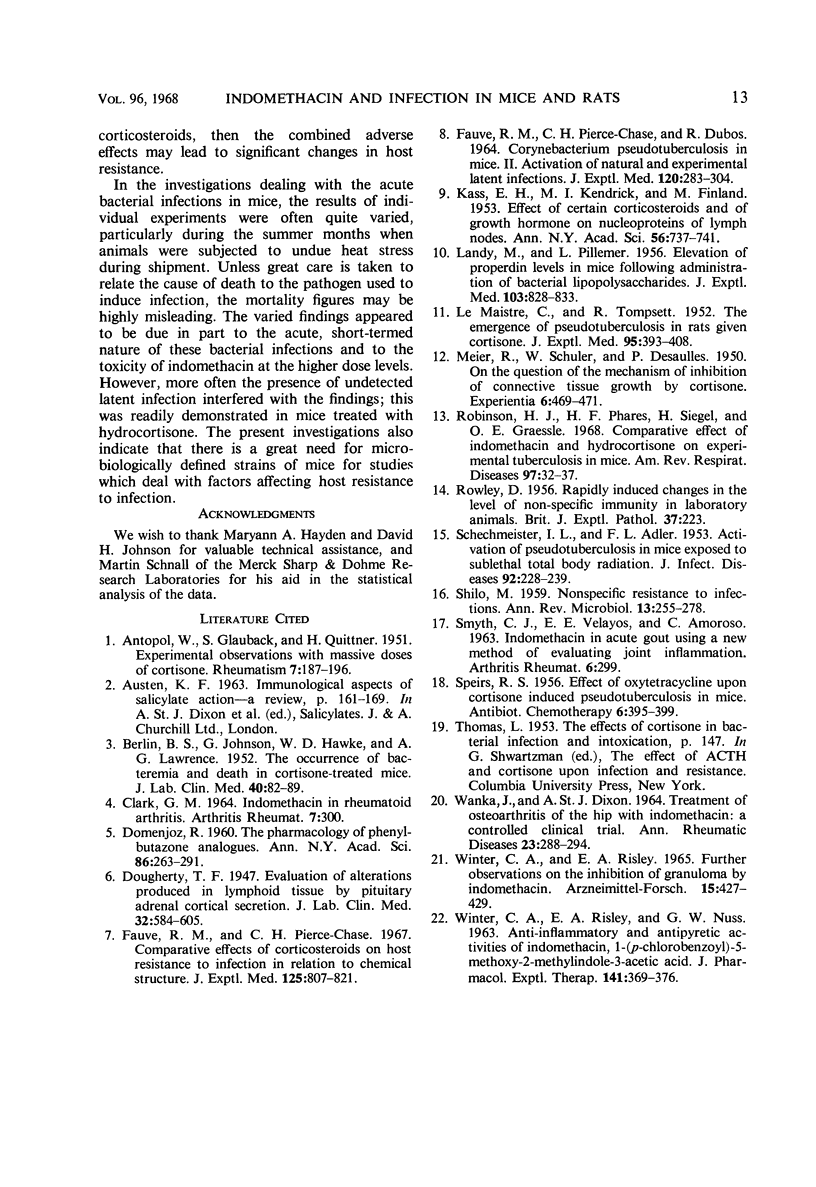
Selected References
These references are in PubMed. This may not be the complete list of references from this article.
- ANTOPOL W., GLAUBACH S., QUITTNER H. Experimental observations with massive doses of cortisone. Rheumatism. 1951 Jan;7(1):187–196. [PubMed] [Google Scholar]
- BERLIN B. S., JOHNSON C., HAWK W. D., LAWRENCE A. G. The occurrence of bacteremia and death in cortisone treated mice. J Lab Clin Med. 1952 Jul;40(1):82–89. [PubMed] [Google Scholar]
- FAUVE R. M., PIERCE-CHASE C. H., DUBOS R. CORYNEBACTERIAL PSEUDOTUBERCULOSIS IN MICE. II. ACTIVATION OF NATURAL AND EXPERIMENTAL LATENT INFECTIONS. J Exp Med. 1964 Aug 1;120:283–304. doi: 10.1084/jem.120.2.283. [DOI] [PMC free article] [PubMed] [Google Scholar]
- Fauve R. M., Pierce-Chase C. H. Comparative effects of corticosteroids on host resistance to infection in relation to chemical structure. J Exp Med. 1967 May 1;125(5):807–821. doi: 10.1084/jem.125.5.807. [DOI] [PMC free article] [PubMed] [Google Scholar]
- KASS E. H., KENDRICK M. I., FINLAND M. Effect of certain corticosteroids and of growth hormone of nucleoproteins of lymph nodes. Ann N Y Acad Sci. 1953 Jul 17;56(4):737–741. doi: 10.1111/j.1749-6632.1953.tb27396.x. [DOI] [PubMed] [Google Scholar]
- LANDY M., PILLEMER L. Elevation of properdin levels in mice following administration of bacterial lipopolysaccharides. J Exp Med. 1956 Jun 1;103(6):823–833. doi: 10.1084/jem.103.6.823. [DOI] [PMC free article] [PubMed] [Google Scholar]
- LeMAISTRE C., TOMPSETT R. The emergence of pseudotuberculosis in rats given cortisone. J Exp Med. 1952 Apr;95(4):393–408. doi: 10.1084/jem.95.4.393. [DOI] [PMC free article] [PubMed] [Google Scholar]
- MEIER R., SCHULER W., DESAULLES P. Zur Frage des Mechanismus der Hemmung des Bindegewebswachstums durch Cortisone. Experientia. 1950 Dec 15;6(12):469–471. doi: 10.1007/BF02154110. [DOI] [PubMed] [Google Scholar]
- ROWLEY D. Rapidly induced changes in the level of non-specific immunity in laboratory animals. Br J Exp Pathol. 1956 Jun;37(3):223–234. [PMC free article] [PubMed] [Google Scholar]
- SHECHMEISTER I. L., ADLER F. L. Activation of pseudotuberculosis in mice exposed to sublethal total body radiation. J Infect Dis. 1953 May-Jun;92(3):228–239. doi: 10.1093/infdis/92.3.228. [DOI] [PubMed] [Google Scholar]
- SPEIRS A. L. An anthropometric study of prematurely born children at the age of 5 years. Arch Dis Child. 1956 Oct;31(159):395–399. doi: 10.1136/adc.31.159.395. [DOI] [PMC free article] [PubMed] [Google Scholar]
- WANKA J., DIXON A. S. TREATMENT OF OSTEO-ARTHRITIS OF THE HIP WITH INDOMETHACIN. A CONTROLLED CLINICAL TRIAL. Ann Rheum Dis. 1964 Jul;23:288–294. doi: 10.1136/ard.23.4.288. [DOI] [PMC free article] [PubMed] [Google Scholar]
- WINTER C. A., RISLEY E. A., NUSS G. W. ANTI-INFLAMMATORY AND ANTIPYRETIC ACTIVITIES OF INDOMETHACIN, 1-(P-CHLOROBENZOYL)-5-METHOXY-2-METHYLINDOLE-3-ACETIC ACID. J Pharmacol Exp Ther. 1963 Sep;141:369–376. [PubMed] [Google Scholar]
- Winter C. A., Risley E. A. Zur Pharmakologie von 1-(p-Chlorbenzoyl)-5-methoxy-2-methylindol-essigsäure, einer neuen, antiphlogistischen Substanz. Arzneimittelforschung. 1965 Apr;15(4):427–429. [PubMed] [Google Scholar]


